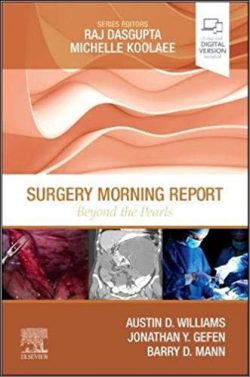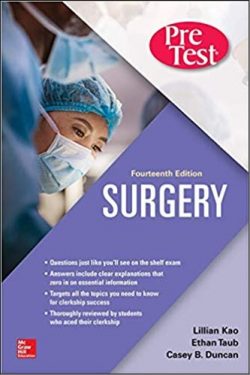This book focuses on standard operative techniques for important diseases in pediatric surgery, especially in neonates and infants, while also offering a wealth of schematic drawings and photographs to help readers understand the surgical techniques. Because of the rarity of the diseases and shortage of advising doctors, operative techniques for neonatal and infant surgery are difficult to learn. In order to understand essential operative procedures, schematic drawings and suitable intraoperative photographs are called for. Operative General Surgery in Neonates and Infants was written by leading experts in pediatric surgery with extensive experience in their respective fields. The contents provide detailed practical advice on the surgical procedures and perioperative management in neonates and infants. This book is a valuable guide for trainees and a helpful refresher text for specialized pediatric surgeons and can also be used to explain operative procedures to parents.
Part I. Basic Procedure.- 1. Vascular Access.- 2. Thoracotomy and Laparotomy.- 3. Laparoscopy and Thoracoscopy.- 4. Foreign Body Extraction.- 5. Tracheostomy.- 6. Tube Gastrostomy and Enterostomy.- 7. Colostomy : Formation and Closure .- 8. Gastrointestinal Anastomosis.- 9. Repair and anastomosis of blood vessel.- 10. Biopsy of Tumor .- 11. Rectal Biopsy.- Part II. Head and Neck.- 12. Head and Neck Sinus and Mass.- 13. Pyriform sinus malformation.- 14. Accessory ear.- Part III. Thoracic.- 15. Standard Operation for Esophageal Atresia.- 16. Esophageal Atresia with Long Gap .- 17. Thoracoscopic Operation for Esophageal Atresia.- 18. Lung Surgery.- 19. Thoracic Empyema.- 20. Congenital Diaphragmatic Hernia and Diaphragmatic Eventration .- Part IV. Abdominal Wall.- 21. Inguinal Hernia; Standard Procedure.- 22. Inguinal Hernia; Laparoscopic Repair.- 23. Direct Inguinal Hernia and Femoral Hernia.- 24. Hydrocele, Nuck Hydrocele; Standard Procedure.- 25. Umbilical hernia, Umbilical plasty, and Linea alba hernia.- 26. Vitellointestinal fistula and Urachal remnant.- 27. Gastroschisis and Omphalocele.- Part V. Abdominal.- 28. Laparoscopic Nissen’s Fundoplication.- 29. Pyloromyotomy.- 30. Duodenal Atresia and Stenosis.- 31. Intestinal Atresia and Stenosis.- 32. Intestinal Malrotation.- 33. Meckel’s Diverticulum.- 34. Internal Hernia.- 35. Intussusception.- 36. Appendectomy.- 37. Gastrointestinal Perforation.- 38. Hirschsprung’s Disease.- 39. Imperforate Anus : Low type .- 40. Imperforate Anus: Intermediate and High Type.- 41. Rectovestibular fistula without imperforate anus (Perineal canal).- 42. Anal Fistula.- 43. Anorectal Prolapse.- 44. Biliary Atresia.- 45. Choledochal cyst.- 46. Splenectomy.- 47. Portal vein hypoplasia and patent ductus venosus.- Part VI. Urology.- 48. Pelviureteric Junction Obstruction.- 49. Vesicoureteric Reflux.- 50. Ureterocele.- 51. Suprapubic Cystostomy and Vesicocutaneostomy.- 52 Bladder Augmentation .- 53 Posterior-sagittal anorecto-urethro-vaginoplasty .- 54 Hypospadias .- 55 Posterior urethral valve .- 56 Phimosis .- 57 Cryptoorchidism and retractile testis .- 58 Testicular Torsion.- Part VII. Tumors.- 59 Lymphatic Malformations.- 60 Neuroblastoma.- 61 Wilms’ Tumor .- 62 Hepatoblastoma .- 63 Sacrococcygeal Teratoma.- Part VIII. Abdominal Organ Transplantation.- 64.Donor Operation in Living Donor Liver Transplantation .- 65. Recipient Operation in Living Donor Liver Transplantation “The book ‘introduces the most up-to-date representative Japanese pediatric surgical procedures and points in pre- and postoperative management.’ … the book achieves its goals. The book is clearly written and can be understood by all. … The line drawings, well done, sharp, concise, and easily understood, stand out as the best features of the book. … This English translation of a Japanese book is a good and fairly complete survey of all things in the realm of pediatric surgery.” (Robert M. Arensman, Doody’s Book Reviews, June, 2017)
This book focuses on standard operative techniques for important diseases in pediatric surgery, especially in neonates and infants, while also offering a wealth of schematic drawings and photographs to help readers understand the surgical techniques. Because of the rarity of the diseases and shortage of advising doctors, operative techniques for neonatal and infant surgery are difficult to learn. In order to understand essential operative procedures, schematic drawings and suitable intraoperative photographs are called for. Operative General Surgery in Neonates and Infants was written by leading experts in pediatric surgery with extensive experience in their respective fields. The contents provide detailed practical advice on the surgical procedures and perioperative management in neonates and infants. This book is a valuable guide for trainees and a helpful refresher text for specialized pediatric surgeons and can also be used to explain operative procedures to parents.
Serves as a clearly structured surgical guide with many detailed illustrations for each disease
Includes the latest topics in operative procedures
Provides a quick and intelligible reference for pediatric surgeons and trainees alike





